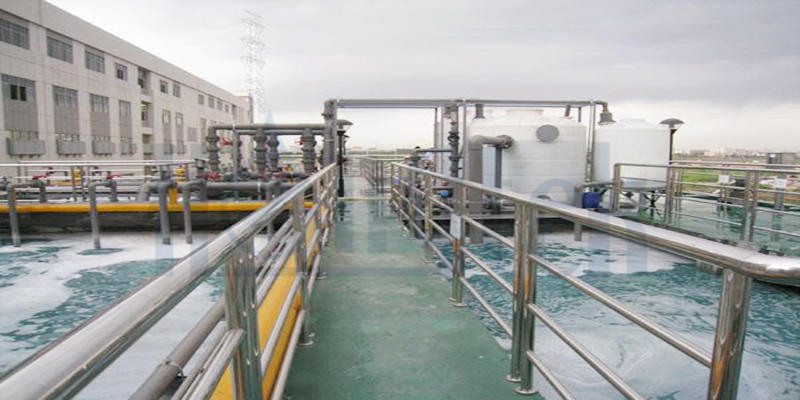
With the development of industrial technology, the use of electroplating products is increasing, and the resulting electroplating wastewater is also increasing. Electroplating wastewater has a large output, high concentration, complex composition, a large amount of free metals and poor biodegradability. Direct discharge will cause extremely serious adverse effects on the ecological environment and human health. So how do we treat industrial electroplating wastewater? Let’s take a look at the following methods together:
1. Chemical Precipitation
The chemical precipitation method mainly includes the hydroxide precipitation method and the sulfide precipitation method, that is to put strong alkali hydroxide or sulfide into the electroplating wastewater to make it precipitate with heavy metals to form hydroxide or sulfide. The chemical precipitation method is simple to operate, not affected by temperature, metal type and concentration, but it has a large chemical input and has a poor treatment effect on complex electroplating wastewater.
2. Adsorption Method
The adsorbent can be used to adsorb pollutants in wastewater due to its porous surface with huge specific surface area and a large number of active groups. The adsorption method is simple to operate, direct removal does not require any flocculant, low cost and under certain circumstances the adsorbent can be regenerated. However, there are also shortcomings such as a huge amount of adsorbent and a sharp drop in adsorption capacity after adsorption.
3. Membrane Separation Method
Membrane separation method refers to the use of external energy or chemical potential difference to form a pressure difference on both sides of the membrane, and the metal ions in the electroplating wastewater selectively permeate the membrane to achieve separation from the wastewater. At present, membrane separation methods mainly include electrodialysis, microfiltration (MF), ultrafiltration (UF), nanofiltration (NF) and reverse osmosis (RO), etc. Hongtek provides a series of microfiltration products, such as Melt Blown Cartridges, string wound cartridges and Pleated Filter Cartridges, that are suitable for pre-filtration of electroplating solution with high removal efficiency and simple operation.
What's more, the UFP and UFM Ultrafiltration Membrane Modules that Hongtek supply could be perfect choice to used in the recovery process of electrophoretic paint. Recently, membrane separation technology is widely used in the treatment process of electroplating water, and all countries are actively strengthening the research and development of this technology.
4. Biological Method
Biological method is to use the biological characteristics of organisms, such as the flocculation, absorption, accumulating and enrichment of microorganisms and plants, to inhale heavy metals in wastewater into organisms, so as to achieve the purpose of removing metals from water. Biological method has the advantages of strong adaptability, wide sources, low operating cost, and no secondary pollution. However, it also has disadvantages such as low treatment efficiency, and heavy metals toxicological effects on microorganisms.
As people’s requirements for the ecological environment are getting higher and higher, the traditional single electroplating wastewater treatment method is no longer suitable for the current environmental protection requirements and economic development. In the actual production process, it is necessary to use multiple methods to work together, which not only meets the emission requirements, but also saves costs.